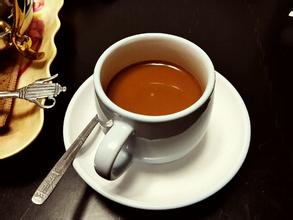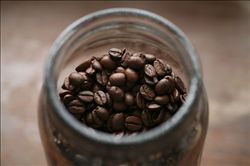Unique Panamanian Coffee Pocket Flower Butterfly Coffee Bean Flavor Manor
The current Constitution of Panama entered into force on 11 October 1972 and has been amended four times in 1978 and 1983, 1994 and 2004. The Constitution stipulates that the three powers of the state are separated and that the President is the head of state and shall be elected by direct election for a term of five years without re-election, but may run for another term. On October 4, 1994, the Pakistani parliament stipulated the abolition of the army and the establishment of a police force. In October 2004, the Constitution made another important amendment, requiring the National Assembly to change its name to the "National Assembly"; the Constituent Assembly as the third way to amend the Constitution; to abolish the post of Vice-President; and members were free to nominate for election, with each member retaining only one alternate. [5]
Parliament
The Panamanian National Assembly is a unicameral system that exercises legislative power. It is composed of 70 members who are directly elected for a term of five years. The current Parliament was formed on 1 July 2009, and the seats occupied by the various parties are as follows: 36 seats for the Democratic change Party (member of the ruling coalition), 17 seats for the Democratic Revolutionary Party, 12 seats for the Panamanian Party, 4 seats for the Nationalist Republican Freedom Movement (member of the ruling coalition) and 1 seat for the people's Party. Sergio Galvez, chairman of Congress, was elected on July 1, 2012 for an one-year term. [5]
The government
The current government of Panama was formed on July 1, 2009. the main members are: vice President Juan Carlos Varela, Minister of the Presidential Office Jimmy Papadimitriu, Foreign Minister Fernando Nunez Favre, Minister of the Interior Jorge Ricardo Favre, Minister of Public Security Jose Raul Mulino, Minister of economy and Finance Frank George de Lima Minister of Commerce and Industry Ricardo Quijano, Minister of Agriculture and Animal Husbandry Oscar Armando Osorio Kassar, Minister of Health Javier Diaz, Minister of Housing Yasmina Pimentel (female), Minister of Labour Armah Lorena Cortez (female), Minister of Social Development Guillermo Ferrufino, Minister of Education Lucy Molina (female), Minister of Public works Jaime Ford Minister of small and medium Enterprises Heathrow Brillo (female), Minister of Canal Robert Roy, Minister of Tourism Salomon Sama
The BOQUETE region of Panama, located in the province of CHIRIQUI on the border with Costa Rica, is the home of Panama's famous GEISHA coffee and is famous for producing high-quality Arabica coffee. The Tedman & McIntyre (TEDMAN&MACINTYRE ESTATE) estate, located in the mountain area of Poggett 4000 feet above sea level, comes from the two earliest coffee families in Panama, the Tedman family and the McIntyre family. In 1925, Canadian fruit merchant Alexander McIntyre (ALEXANDER DUNCAN MACINTYRE), infected by his brother Joseph, came to Poggett to settle down, married ANGELA ROSAS in the same year, bought an estate named "LA CAROLINA" and began to grow coffee. Their descendants still own the estate and have become one of the most famous coffee farms in Panama: a rare wild species and a regular winner of the world's tasting competitions. The appearance of raw beans is slender, ripe beans have unexpected citrus aromas, and the aftertaste is full of flowers and sweet fruit. Absolutely unique boutique coffee.
Rosa originated from a very rare wild species in Ethiopia, and the beans may be named after this coffee bean found near the local village called Rosa. The coffee tree is tall, its leaves are slender, and it is not afraid of coffee rust. It is characterized by a wide gap between branches on the trunk. The appearance of raw beans is slender and ripe beans have strong and strong fruit aroma characteristics. The microclimate of the Panamanian highlands is the most important resource that makes Panamanian coffee unique because its harvest is so low that it cannot be bought commercially.
The most important resource that makes Panamanian coffee unique is its microclimate. The east-west environment of the Republic of Panama converges cold air over 6500 feet through the Central Mountains, creating a variety of microclimates in the Boquete and Volc á n-Candela regions, making it a major source of Panamanian coffee. These unique coffees are grown in nutritious and balanced land located in the Baru volcano region.
Panamanian coffee is classified and numbered into small batches, which are designed to have a small capacity for optimal management, and classification numbers allow buyers to understand and track the entire process.

Important Notice :
前街咖啡 FrontStreet Coffee has moved to new addredd:
FrontStreet Coffee Address: 315,Donghua East Road,GuangZhou
Tel:020 38364473
- Prev

Introduction to the flavor and taste of the growing environment of boutique coffee beans in Kimmel Manor, Rwanda
Rwanda has many mountains and is known as the country of a thousand hills. The whole country is at a high altitude: the lowest point, the Luzizi River, is also 950 meters above sea level. The Midwest is dominated by mountains, which are part of the Aberdeen Rift Valley, which is part of the East African Rift Valley, extending from north to south along the western border of Rwanda. The highest mountain in the country is located in the northwest of Wei.
- Next

Introduction of Santa Cruz Manor to the flavor and taste of Ecuadorian coffee producing area
Ecuador has a presidential system. On 26 November 2006, Correa, a candidate of the Sovereign Motherland Movement, was elected president in the second round of presidential elections and took office on 15 January 2007. Immediately after taking office, Coe promoted the convening of the Constituent Assembly. On April 15, 2007, Eritrea decided to hold a Constituent Assembly in a referendum with an approval rate of 81.72%. In September, Eritrea held the election of representatives to the Constituent Assembly, the leader of the ruling party.
Related
- Does Rose Summer choose Blue, Green or Red? Detailed explanation of Rose Summer Coffee plots and Classification in Panamanian Jade Manor
- What is the difference between the origin, producing area, processing plant, cooperative and manor of coffee beans?
- How fine does the espresso powder fit? how to grind the espresso?
- Sca coffee roasting degree color card coffee roasting degree 8 roasting color values what do you mean?
- The practice of lattes: how to make lattes at home
- Introduction to Indonesian Fine Coffee beans-- Java Coffee producing area of Indonesian Arabica Coffee
- How much will the flavor of light and medium roasted rose summer be expressed? What baking level is rose summer suitable for?
- Introduction to the characteristics of washing, sun-drying or wet-planing coffee commonly used in Mantenin, Indonesia
- Price characteristics of Arabica Coffee Bean Starbucks introduction to Manning Coffee Bean Taste producing area Variety Manor
- What is the authentic Yega flavor? What are the flavor characteristics of the really excellent Yejasuffi coffee beans?

